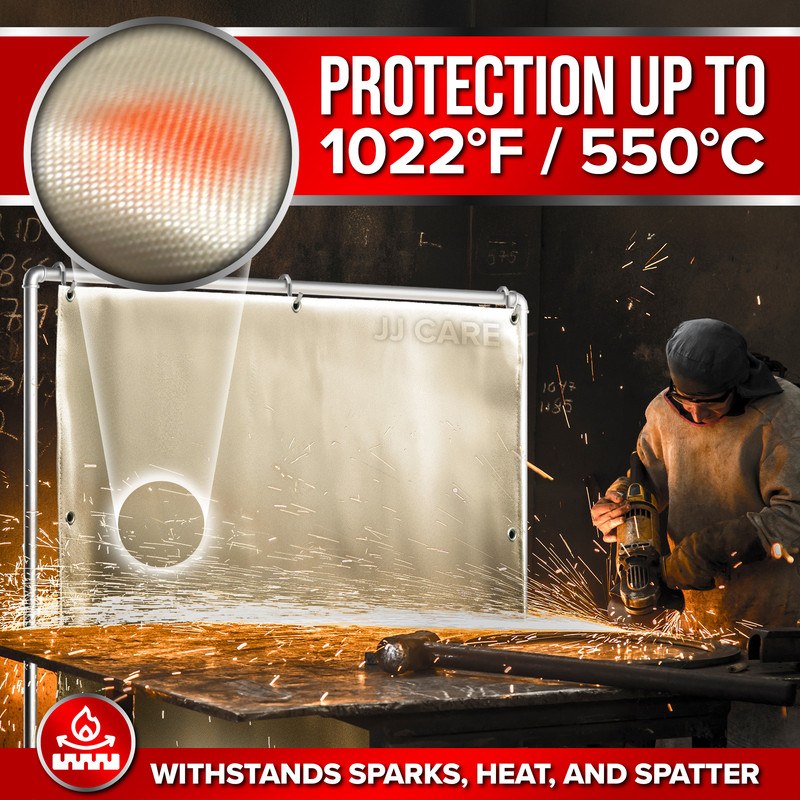Introduction
Welding is an intricate art that demands precision, skill, and the right equipment to ensure not only quality workmanship but welder blanket insulated also safety. One such critical piece of equipment often overlooked is the welding blanket. But what exactly are welding blankets made of? And why are they essential in a welding environment? In this comprehensive article, we will delve into the world of welding blankets—exploring their composition, functionality, types available in the market, and much more.
What Are Welding Blankets Made Of?
Welding blankets are crafted from materials specifically designed to withstand extreme temperatures and protect against sparks, heat, and molten metal. The most common materials used in manufacturing these essential safety tools include:
- Fiberglass: This is one of the most commonly used materials due to its excellent heat resistance. Fiberglass blankets can tolerate temperatures ranging from 1000°F to over 2000°F. Silica Fabric: Known for its high melting point (over 3000°F), silica fabric is less common but incredibly effective for high-temperature applications. Carbon Fiber: A lightweight yet durable option, carbon fiber offers good thermal insulation while being resistant to corrosion.
Why Choose High-Quality Materials?
Choosing high-quality materials ensures that the welding blanket performs effectively under extreme conditions. Investing in a reliable blanket can prevent accidents or damage during welding tasks.
Functionality of Welding Blankets
Welding blankets serve multiple functions that enhance safety in various environments:
1. Fire Resistance
The primary function of a welding blanket is to act as a fire-resistant barrier. This feature is crucial in preventing fires from spreading when working with flammable materials nearby.
2. Heat Protection
Welding generates intense heat that could damage surrounding surfaces or harm workers. A quality welding blanket absorbs and reflects heat away from potentially hazardous areas.
3. Spark Containment
Sparks can fly during welding operations, posing a significant risk to both workers and property. Using a welding blanket helps contain these sparks within a confined area.
4. Surface Protection
In scenarios where delicate equipment or surfaces need protection during welds, a welding blanket can act as a shield against heat and debris.
Types of Welding Blankets Available
Understanding the different types of welding blankets can help you choose the right one for your needs:
1. Standard Welding Blankets
These are typically made from fiberglass and are suitable for most general-purpose applications.
2. High-Temperature Blankets
Designed for extreme conditions, these may be made from silica or other specialized materials capable of withstanding higher temperatures.
3. Fire-Retardant Blankets
These blankets are treated with fire-retardant chemicals to enhance their resistance to combustion.
4. Custom Size Blankets
Some suppliers offer custom sizes tailored to specific projects or workspaces.
How Do You Use Welding Blankets Effectively?
Using welding blankets correctly can greatly enhance safety during operations:

Cover Flammable Materials: Always ensure flammable items are covered with welding blankets when working nearby.
Secure Properly: Make sure the blanket is secured firmly so it won't move during operations.
Inspect Regularly: Check for signs of wear or damage before each use—worn-out blankets may not provide adequate protection.
Follow Manufacturer Guidelines: Always adhere to guidelines provided by manufacturers for optimal usage.
Where Can You Find Welding Blankets Near Me?
Finding a reliable source for purchasing welding blankets can be straightforward if you know where to look:
Local Hardware Stores: Most hardware stores stock basic welding supplies including blankets.
Specialty Welding Supply Shops: These shops often carry a wider variety of options including high-temperature and custom-sized blankets.
Online Retailers: Websites like Amazon and specialized industrial suppliers often provide detailed product descriptions and customer reviews which can guide your choice.
Trade Shows & Expos: Attending industry-related events can provide opportunities to connect with suppliers directly.
Welding Preheat Blankets Explained
Another relevant category worth mentioning is "welding preheat blankets." These specialized products serve unique purposes:
What Are Welding Preheat Blankets?
Welding preheat blankets are designed specifically for warming up metal before beginning welds—a vital process in certain applications where maintaining temperature consistency improves weld quality.
How Do They Work?
Preheat blankets utilize electrical heating elements or insulating properties to evenly distribute warmth across metal surfaces prior to welding, helping reduce stress fractures associated with rapid temperature changes.
Benefits of Using Preheat Blankets
- Reducing Stress Cracking Improving Weld Quality Enhancing Material Integrity
FAQ Section
1. What Is the Best Material For a Welding Blanket?
The best material depends on your specific needs; however, fiberglass is widely favored for general use due to its balance between cost-effectiveness and performance.
2. How Long Do Welding Blankets Last?
With proper care and regular inspections, high-quality welding blankets can last several years even under heavy use.
3. Can I Wash My Welding Blanket?
Most manufacturers recommend spot cleaning only; thorough washing could compromise the integrity of the material.
4. Are There Regulations Concerning The Use Of Welding Blankets?
Yes! OSHA provides guidelines regarding fire safety measures in workplaces where welders operate.
5. What Thickness Should I Look For In A Welding Blanket?
Typically, thicknesses range from 0.25 inches up to around two inches; consider your specific application when choosing.
6. How Do I Know If A Blanket Is Fire-Retardant?
Look for certification marks or labels indicating compliance with applicable safety standards.
Conclusion
In conclusion, understanding "Welding Blanket Essentials: Understanding Their Composition and Functionality" sheds light on an often-overlooked aspect of workplace safety in the field of welding operations. Whether you’re using standard fabrics or exploring advanced options like preheat blankets, investing in high-quality materials ensures enhanced protection against hazards associated with this demanding craft.
From their varied compositions—including fiberglass, silica fabric—to their multifunctional roles such as spark containment and surface protection, selecting the right type becomes pivotal for safeguarding both personnel and project integrity alike!
As always remember; whether you're asking yourself what are welding blankets made of, seeking welding blanket near me, or curious about welding preheat blankets, having informed choices will lead you toward successful outcomes—all while keeping safe practices at the forefront!